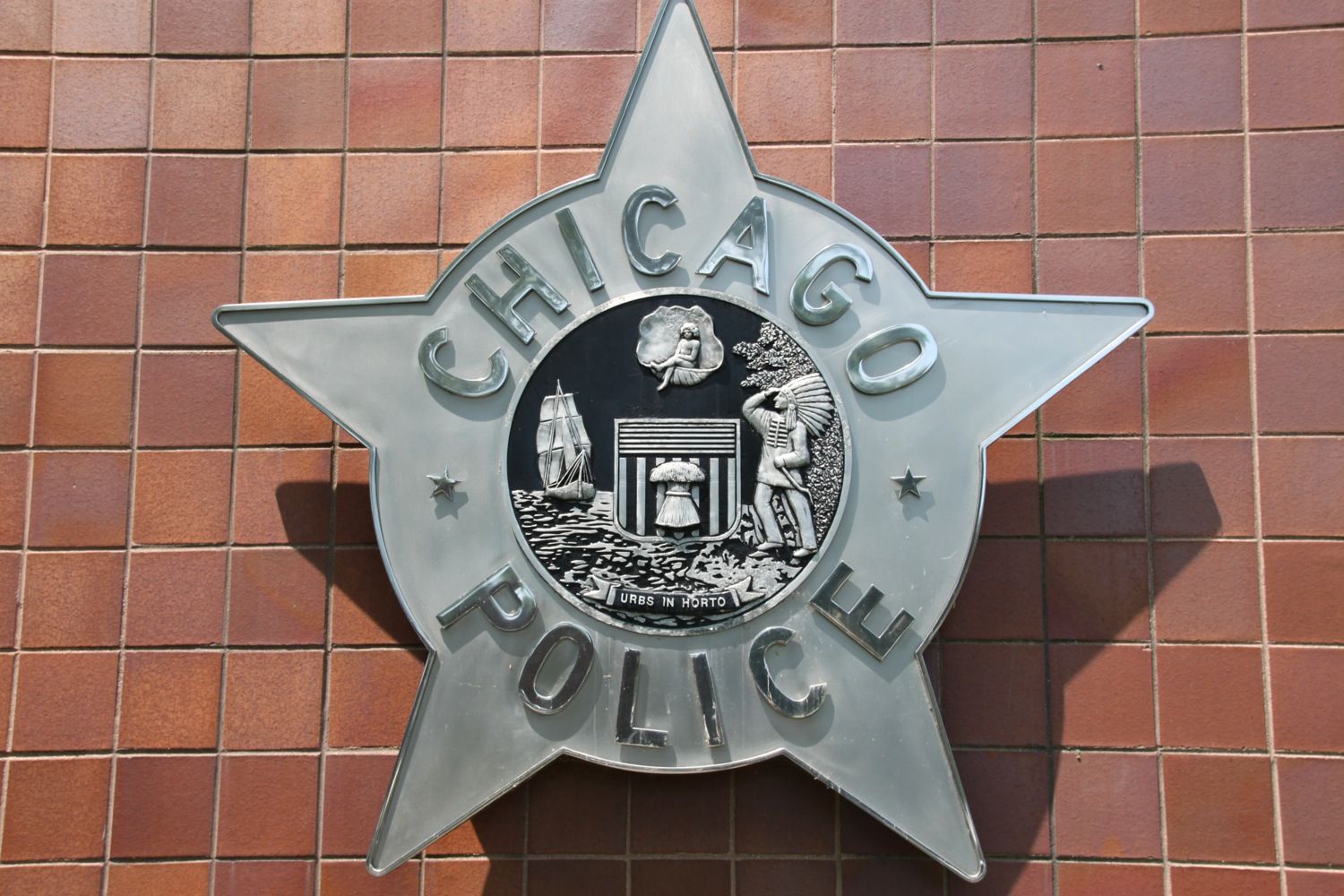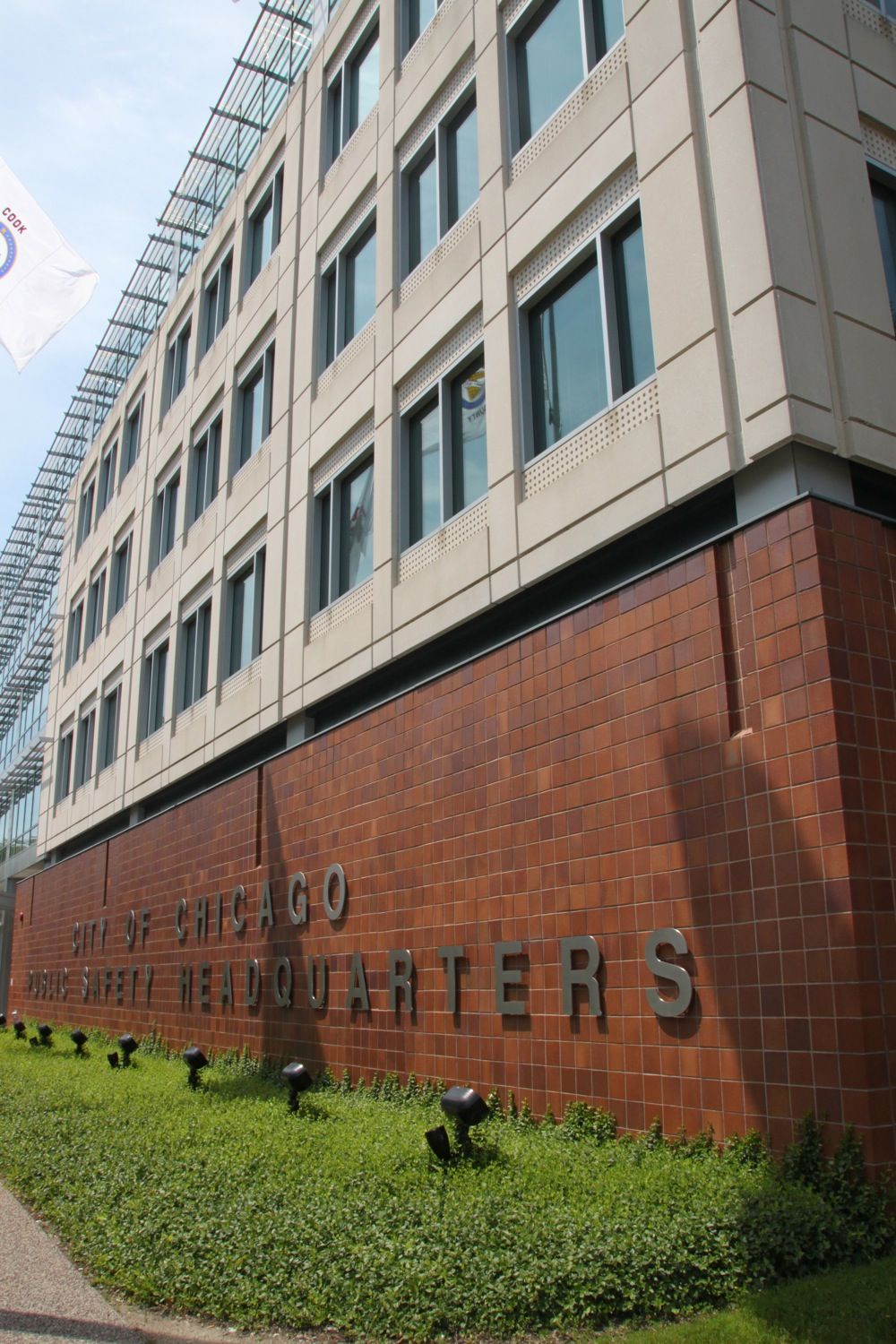A rainy day makes for a much calmer shift for Officers Brenna Scanlan and Brent Antesberger in the Chicago Austin district on the city’s West Side. Having to deal with people hanging out on the streets and getting into fights is much more a problem when it’s sunny and hot outside. So far this spring, Chicago has seen few hot days and a lot of rain – and a drop of the homicide rate in the first quarter of 2013 that officials would like to tag to the police’s anti-gang strategy. They hope to keep it up during the hotter summer months.
So on this late afternoon in May, the Chicago Police officers are chasing the smaller fish. Hustlers on the corners, crack that changes hands for ten bucks, traffic violations. But you never know what might cross your way when working a shift in one of Chicago’s more violent neighborhoods.
The 15th district of the Chicago Police Department sees a lot of violence and drugs; the income of most people in this community is low, the police call it “economically disadvantaged.” According to police data, the neighborhood has an average of 34.5 homicides per 100,000 people.
So even if it’s “dead outside” as Officer Scanlan describes this afternoon shift from 2 to 11 p.m., you better watch out. At a gas station, five young African-American boys hang out. As the police car drives by they try to scatter but without success. Handcuffed with plastic strips they lean against the police car, being searched for guns and drugs. The officers find nothing. They are suspected of selling weed and the corner is infamous to the officers who have been working this district for years. It takes a good amount of the officer’s shift to identify the suspects and run checks on them. Three of them have a criminal record, one of the kids had three arrests in the last ten days alone. This time, as no drugs are found, all of them are free to go. A daily routine for the officers on the beat. “We could spend all day on this corner,” says Officer Scanlan who has been with the force for nine years.
She and her partner know the streets they circle every day well. Despite the boredom that can occur on a slow day they need to be prepared. The bullet proof vest is not so much bullet proof but rather bullet resistant. The gang members and criminals will always outnumber the police. And guns are their weapon of choice. “Every gun out there is a gun that can take a police officer’s life,” says Joshua Purkiss who is with the CPD’s department of public affairs and the one who accompanies me on the ride with Officers Scanlan and Antesberger.
After Superintendent Gary McCarthy took office, the CPD changed its strategy to tackle the gang violence in the city that got plenty of national attention last year when it saw one of the most violent years in a long time. Part of the new strategy is having officers working the same beat to get to know the community and not have a task force rushing in when problems occur. Mayor Rahm Emanuel, who took office in 2011, made that change last year and dismantled anti-gang units in favor of having more beat patrols.
Having a good relationship with the community might help knowing more about what is going on. In times when gangs are becoming more and more fragmented, knowledge is of the essence for the police. “Smaller gangs make life for us more difficult,” says Purkiss. Crime is — much like this afternoon shift — a constantly moving and changing thing, often fast, sometimes slow, hard to grasp but never set.
To keep track of the changing landscape of the gangs, the police department implemented a new anti-gang strategy. In charge of the “Crime Control Strategies” is Chief Bob Tracy. Considering the good statistics the second largest force of the nation was able to put out in the first quarter of the year, Tracy is in a good mood, sitting in his corner office at the police's headquarter.
"Overall crime is down 14 percent, murders are down 34 percent — and we can keep that up”, he says, giving the new overall anti-gang strategy credit for this success. What the department did last year, Tracy explains, was to collect all possible data and information on gangs from all sides, and to draw the most comprehensive picture of the situation possible. “We haven't been doing that in a couple of years,” Tracy admits. Result of the audit: the police identified 59 main gangs and hundreds of sub-groups in the city. "More splitting creates more conflicts," says Tracy.
Part of the new strategy is to try to figure out associates of a shooting victim to try to foresee which gangs or cliques might be looking for retaliation. But the new strategy and good numbers come with a price: critics say that cops are overworked and undermanned. More people are leaving the 12,500 strong force than are being hired and the city has already used a large portion of its overtime budget for this year — $31.9 million of the budgeted $38 million as the New York Times reported in June.
The police claim that there is no overtime used in the gang reduction strategy, but fact is that there is a lot of footwork on the streets of the city. Every other police car we met that afternoon in Austin had a rookie officer on board. And it's not only rookies on the street but also former desk-cops. After the case of Hadiya Pendleton, the 15-year-old girl whose murder in January 2013 received national attention, Mayor Emanuel made the decision to move hundreds of cops from their desks onto the streets.
A move not everyone appreciates. “They don't have any experience on the street,” says a retired Chicago police officer who was working on the streets for more than 30 years. “They are not replacing quality with quality," said the former officer who did not want me to use his name. Working with a good partner, a lot of training and experience in the neighborhood, that's what makes a good cop on the street for the 65-year-old who had the rank of a detective when he left. The rookies run through six months academy and 12 weeks of training on the streets with an experienced partner.
The next class due to graduate this summer will help relieve the overtime problem according to Chief Tracy, who claims that the CPD will keep the number of 12,500 men and women on the force.
Listening to the former Chicago detective who cites numbers from the police union, one gets a different picture: “Between 2009 and 2012, 820 policemen were hired and 2,200 cops left the job.” For him, these numbers show the essential problem when it comes to the violence in the city. “The police is short on officers, it's ridiculous,” he said.
Compared to other major cities, though, Chicago has one of the highest numbers of officers in relation to population — 44,7 per 10,000 people compared to 42 in New York and 25.7 in Los Angeles. The new strategy of putting a lot of manpower on the ground in the most violent districts indicates that more men show success in reducing crime.
Much harder to reduce is the number of guns circulating the streets of Chicago. More guns are recovered here than in most other big cities. More than 6,000 in 2011 alone compared to 3,980 in New York. “There are too many guns, and too little punishment,” says Chief Tracy, promoting a mandatory minimum sentence for the possession of illegal firearms. Mayor Emanuel wants to increase the mandatory prison term from one to three years with the requirement of serving 85 percent of the sentence.
For the officers on the street, those laws might be nice to have in the long run; and a poll by PoliceOne among more than 15,000 police officers shows that more than 90 percent are in favor of mandatory sentences with no plea bargain when a gun is used in a crime. Something that will take years for law makers to achieve, if ever. The survey also shows that a majority are in favor of citizens being allowed to carry a concealed weapon. No guns, it seems, is not an option when it comes to the question of how to achieve a save society. All this leaves police officers in Chicago with little but keeping vigilant — and hoping for rain.



